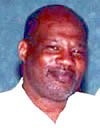-
(b.) - ?1950 April 21
Bio/Description
A self-taught childhood electronics prodigy, he recalls reading 2,000 words per minute with 90% retention by the time he graduated from San Martin (California) Elementary School. His early interests included designing a computerized video system for sharing library materials over TV, which he worked on during his high school years; and robotics. In 1967, at the age of 17, he purchased a PDP-8/S computer in order to perform calculations for his projects. The need for smaller computers for controlling self-contained humanoid robots led to the first design for a microcomputer, a PDP-8 with all of its logical functions placed on a single microchip. He presented his design to Fairchild Semiconductor in February of 1968, but the company rejected his idea. He graduated from the University of California, Berkeley, with a Bachelors degree in physics in 1973, but during the summer of 1968 he worked for IBM performing logic design for IBM's Project Winchester, which led to the creation of the hard drives commonly found in today's personal computers. When he started working for Intel in the Spring of 1970, he brought his ideas of computer architecture and miniaturization to the project to develop a business calculator, which then became the first microprocessor, the 4004 in 1971. Unfortunately, he was largely not given the credit for his design and the official history of the development of the first microprocessor (4004, IEEE Micro, December 1996, pp. 10-20) leaves the reader with the impression that Federico Faggin, Marcian (Ted) Hoff, Stanley Mazor, and Masatoshi Shima were the sole designers and inventors.
-
Date of Birth:
1950 April 21 -
Gender:
Male -
Noted For:
Conceptualized the design for putting a computer on a chip and the first to utilize Switches as a backbone to Servers and is arguably one of the greatest technological advances of the Twentieth Century -
Category of Achievement:
-
More Info:


